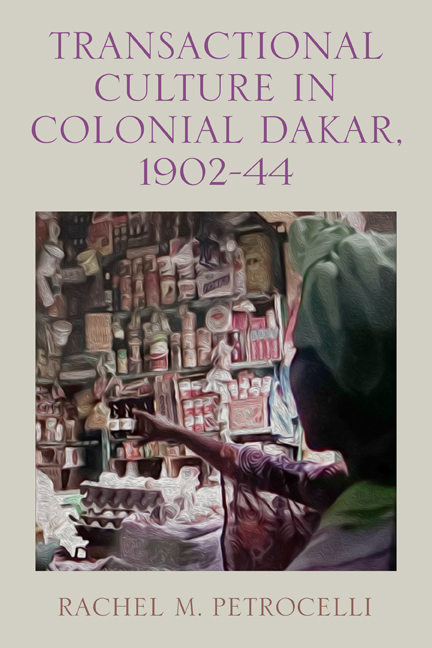Book contents
- Frontmatter
- Dedication
- Contents
- List of Illustrations
- Acknowledgments
- Introduction
- 1 Illusory Roots: Europeans, Autochthony, and Visions of a Capital City
- 2 The Rhetoric of Refoulement in Colonial Dakar
- 3 Challenges and Solutions of the Transient City
- 4 Impediments and Ingenuity in Financial Life
- 5 Ethnic Boundaries, Economic Niches, and Ambiguities in the Colonial City
- 6 The Lebanese and the Local in the Interwar Period
- 7 War’s Window: Urban Informality and Control
- Epilogue
- Bibliography
- Index
Epilogue
Published online by Cambridge University Press: 08 May 2024
- Frontmatter
- Dedication
- Contents
- List of Illustrations
- Acknowledgments
- Introduction
- 1 Illusory Roots: Europeans, Autochthony, and Visions of a Capital City
- 2 The Rhetoric of Refoulement in Colonial Dakar
- 3 Challenges and Solutions of the Transient City
- 4 Impediments and Ingenuity in Financial Life
- 5 Ethnic Boundaries, Economic Niches, and Ambiguities in the Colonial City
- 6 The Lebanese and the Local in the Interwar Period
- 7 War’s Window: Urban Informality and Control
- Epilogue
- Bibliography
- Index
Summary
In 1960, Dakar became the capital of Senegal. It became an African city in the fullest sense, realizing a political status that matched its composition and urban identity. This book has shown that identity to have been forged by city dwellers as they sought to mitigate the racism embedded in colonialism to make Dakar a resource and a livable space that suited their own needs. This historical foundation, paired with Dakar's role as an economic, social, and cultural mecca in its region, poised the city for rapid growth once the changes of the mid-1940s set in. The capital grew in population, and trans-formative change in the city's landscape followed in the 1950s as intensive development took place in the waning years of colonialism. By the time of independence in 1960, the greater agglomeration that constituted Dakar had a population of almost half a million people, a milestone it more than doubled only fifteen years later.
Part of Dakar's outward-facing identity was one of transience and impermanence. The capital's involvement in local, regional, and global networks— and the movement of people inherent to them—only deepened over time. In the absence of significant natural resources on which to build a national economy, Leopold Sédar Senghor, Senegal's first president, sought to maintain the country's international standing, with Dakar at its center as an incubator of heterogenous human resources. Senghor positioned Senegal to act as a global hub that was hospitable to people from all over the world. Journalists, diplomats, multinational corporation employees, researchers, nongovernmental organization workers, and others replaced French colonial administrators and their corollaries as Dakar's transient foreign community.
For many years, I was among them, inserting myself further and further over time into the transactional culture, which had become complex and expansive by Senegal's fiftieth anniversary of independence while maintain-ing many of the attributes established some eighty years prior. As a transient Dakarois, I found myself participating in the local transactional culture that wove throughout the court records I read through each day. The prominence of informality, which had originated in Dakar's early years of growth, was embedded in a world that paired scarcity with prosperity and remained central to its workings.
- Type
- Chapter
- Information
- Transactional Culture in Colonial Dakar, 1902-44 , pp. 172 - 176Publisher: Boydell & BrewerPrint publication year: 2024

